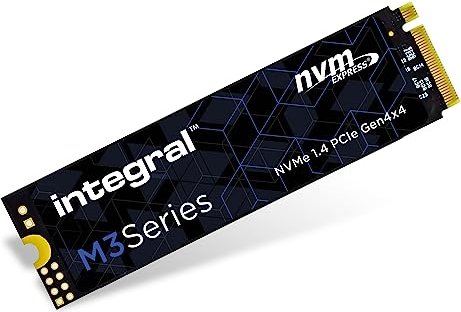Choosing the Best PCIe NVMe SSD for Your Needs: A Friendly Guide

📝 Summary
Discover the best PCIe NVMe SSD options tailored for your unique needs in this engaging guide.
Choosing the Best PCIe NVMe SSD for Your Needs: A Friendly Guide
Hey there! If you're here, you’re probably wondering about the best PCIe NVMe SSD to match your needs. Trust me, you’re in the right place. Whether you’re a gamer, a content creator, or just someone who wants a faster computer, choosing the right SSD is key to boosting performance. Let’s unpack this together, shall we?
What’s the Big Deal About NVMe SSDs?
So, first things first—let’s talk about what NVMe is. NVMe stands for Non-Volatile Memory Express. It’s a protocol designed to enhance the speed of data transfer between your SSD and your computer. To put it simply, this means faster boot times, quicker file access, and overall snappier performance. If you’re feeding your computer data, you want it to be fast, right?
Why You Should Care Now
You might wonder, why is it so important to know about NVMe SSDs now? Well, with digital demands increasing—like 4K video editing, gaming at high resolutions, and running heavy applications—a good SSD is more vital than ever. Imagine waiting ages for your game to load or your video editing software to start. Ugh! No thanks.
What to Look For in an SSD: The Essentials
- Capacity: How much storage do you really need? This can range from 250GB to several terabytes. Think about what you store—games, videos, documents. Go for something that will match your future needs as well.
- Speed: Look for read and write speeds. Some models can reach up to 7000 MB/s or higher! Faster speeds can translate to a significant performance increase.
- Endurance: SSDs have lifespans, usually measured in terabytes written (TBW). Depending on how much writing you do, pick an SSD with a good endurance rating.
- Form Factor: Make sure your computer supports the SSD size. Common forms are M.2 and PCIe cards. Desktop users generally have more flexibility than laptop users.
- Price: Budget is always a factor. There are great options at various price points, so you don’t have to break the bank.
Recommended SSDs for Different Needs
Here’s a handy list, based on various use cases:
For Gamers
- Samsung 970 EVO Plus
Speed: Up to 3500 MB/s read, 3300 MB/s write.
Capacity: Up to 2TB.
Why it’s great: Exceptional speed and reliability. - Western Digital Black SN850
Speed: Up to 7000 MB/s read!
Capacity: Up to 2TB.
Why it’s great: Perfect for intense gaming scenarios, no lags!
For Content Creators
- Lexar NM620
Speed: Up to 2100 MB/s read, 1600 MB/s write.
Capacity: Up to 2TB.
Why it’s great: Affordable, decent speeds for video editing and more. - Crucial P5 Plus
Speed: Up to 6600 MB/s read.
Capacity: Up to 2TB.
Why it’s great: Great balance of speed and price—ideal for creators.
For Everyday Users
- Samsung 970 EVO
Speed: Up to 3400 MB/s read, 2500 MB/s write.
Capacity: Up to 2TB.
Why it’s great: Reliable and fast for most users’ needs. - Kingston NV1
Speed: Up to 2100 MB/s read, 1700 MB/s write.
Capacity: Up to 2TB.
Why it’s great: Budget-friendly option for everyday tasks.
Personal Recommendations
Honestly, if I were to recommend just one SSD right now? I’d say the Samsung 970 EVO Plus. It strikes a perfect balance between speed, reliability, and price. Plus, it has fantastic endurance, which means it’s built to last. Your data matters, after all!
The Installation Process: Don't Sweat It
Worried about how to install your new SSD? Don’t be! Here’s a quick guide:
- Turn off Your Computer: Always a good first step.
- Open the Case: Refer to your computer's manual for guidance.
- Locate the M.2 Slot: If you’re using an M.2, this is where your new SSD will go.
- Insert the SSD: Line it up and give it a gentle press down.
- Screw It In: Most SSDs come with a screw; just fasten it securely.
- Close Your Case: And turn your computer back on.
See? Easy peasy!
Keeping Your SSD Healthy: Maintenance Tips
Just like any important device, your SSD deserves a little TLC:
- Regular Backups: Always backup important data. Use an external drive or cloud service for safety.
- Monitor Performance: Tools like CrystalDiskInfo can help you track the health of your SSD.
- Avoid Filling It Up: Try to leave some free space; it helps keep things running smoothly.
- Update Firmware: Sometimes manufacturers release updates that can improve performance. Keep an eye on that!
Wrapping Up: The Right Choice Matters
In a world where we want everything to be fast and efficient, choosing the right PCIe NVMe SSD becomes crucial. Whether you want to edit that family video quickly, jump into a game, or simply enjoy a seamless workflow, the right SSD can make all the difference.
Take your time to weigh your options, and don't hesitate to ask if you have any questions. Need more detailed statistics? Check out the official Samsung SSD site or Crucial's product information.
And when you’re ready to upgrade, remember, it’s not just about capacity or speed; it’s about making your digital life smoother and more enjoyable!
Feel free to drop me your thoughts or other recommendations in the comments—I love hearing from you!

_Image source: [gzhls.at]
Happy storing!
For further reading, check out the Wikipedia page on Non-Volatile Memory.
